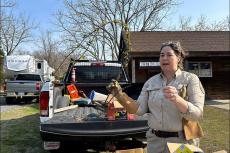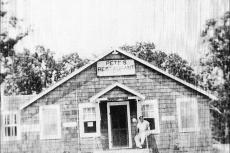Heavy rains brought high bacteria levels across Montauk last week, with the Surfside Place outfall pipe downtown leading the way with an off-the-chart enterococcus reading of greater than 24,196.
The nearby beach at Surfside Place registered a 750, while the next highest level after the outfall pipe was on the east side of Napeague Harbor, according to the Sept. 26 water quality report from Concerned Cizitens of Montauk, which monitors for the harmful bacteria at 32 sites in the Town of East Hampton.
The Amagansett site registered a 988, and a few other sites were in the high hundreds across Montauk. A 104 level of 104 and above is potentially harmful to humans.
Three test sites on Accabonac Harbor in Springs meanwhile had medium levels of the entero bacteria.
"There was heavy rain prior to sampling which is likely why the bacteria readings are higher than last week," said the C.C.O.M. program manager, Jaime LeDuc.
The nonprofit also works with the Gobler Laboratory at Stony Brook University to regularly monitor Fort Pond in Montauk for toxic cyanobacteria blooms.
Ms. LeDuc said that while no blooms were detected in Fort Pond -- triathletes are scheduled to swim there Sunday during the MightyMan Montauk Sprint Triathlon -- Big Reed Pond in Montauk was also sampled and tested positive for a bloom. Results are pending from the Gobler Lab to determine whether it reached toxic levels.
Fort Pond is at medium risk of a toxic bloom, according to C.C.O.M., which reports that blue-green algal levels of 20 and above indicate a water body is at high risk and should be tested for toxins. Anything above 25 is considered a bloom by the New York State Department of Environmental Conservation. Fort Pond registered a 15.
The triathlon producer EventPower says it is working with C.C.O.M. to "test the water weekly and if needed daily leading up to the race," and has a backup swim site on Ford Pond Bay should conditions be unsuitable in the pond.



